
I hope this analysis will shed light on the way we construct reality as children, the way we understand the world as adults and the magical experience we share when transitioning from this second meaning-making system to the first.
Abstract
Robert Kegan’s constructive-developmental theory acknowledges an evolving complexity of the subject-object relationship over the course of personal development. Kegan’s ordering system ascends from First to Fifth according to this complexity; young children begin at the First order, while very few adults ever reach the Fifth. Relying on evidence-based analysis drawn from Walt Disney’s speeches, quotes, and biography, I will explore how Fifth order thinking allowed Disney to hold childhood – predominately a First and Second order experience – as object, and how manipulation of this subject-object relationship led to the unprecedented success of the Disney franchise. I will begin with a brief review of Disney’s life and accomplishments, followed by a discussion of childhood and First/Second order meaning-making. I will then define the higher systems and transition into a critical review of Disney’s personal level of development. From this analysis, I will summarize my argument and conclude with the implications that these findings may have on other leaders – and an explanation of why children of all ages still love to wear the Mickey Mouse Ears.[1. Approximately 3,421,399 of the famous hats are sold each year – Disney by the Numbers, 2007.]
Editor’s Note:
Paper originally written for Robert Kegan, PhD in fulfillment of requirements for Psychology E-1034: Adult Development, Harvard Graduate School of Education, 2010
What is Constructive-Developmental Psychology?
Constructive-developmental psychology merges the concept of constructivism (“the belief that the world isn’t out there to be discovered, but that we create our own world by our discovery of it”) with developmentalism (“the belief that humans grow and change over time and enter qualitatively different phases as they grow”) (Garvey Berger, 1999, p.1). First introduced by Kegan in 1982, the constructive-developmental theory organizes personal meaning-making systems (the way we make sense of our surroundings) into five distinct “orders of mind.” Each order represents an evolution from the last, requiring the individual to change “not just the way he behaves, not just the way he feels, but the way he knows – not just what he knows but the way he knows” (Garvey Berger, 1999, p. 2).
This transformation is defined by what Kegan calls the “subject-object” relationship. According to Kegan, “ ‘subject’ refers to those elements of knowing or organizing that we are identified with, tied to, fused with, embedded in […] ‘object’ refers to those elements of our knowing or organizing that we can reflect on, handle, look at … or otherwise operate upon” (Kegan, 1994, p. 32). In other words, if we control a way of thinking, it is object; if a way of thinking controls us, it is subject.
Kegan’s five orders acknowledge an evolving complexity of the subject-object relationship over the course of personal development. As Jennifer Garvey Berger explains in Key Concepts for Understanding the Work of Robert Kegan, “Each order is a qualitative shift in the meaning-making and complexity from the order before it. We do not give up what we’ve learned in a previous order; we transform, changing the actual form of our understanding of the world” (p. 3). Kegan’s ordering system ascends from First to Fifth according to this complexity; young children begin at the First order, while very few adults ever reach the Fifth.
Who is Walt Disney?
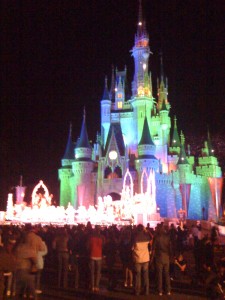
I used to live 5 minutes outside of Disney World – I could see the Illuminations lasers each night from my apartment ♥
Walt Elias Disney was born in Chicago, Illinois on December 5, 1901 (Disney Archives). When he was five years old, his family moved to a farm in Marceline, Missouri. As Disney describes it, “We lived there six years, and I guess it must have made a deep impression on me […] Those were the happiest days of my life […] I think that everything you do has some effect on you, and that old farm certainly made an impression on me” (Disney & Jackson, 2006, p. 11). Although Disney dropped out of high school in 9th grade, he went on to receive honorary degrees from Harvard, Yale, the University of Southern California, and UCLA. Over the course of his 43-year career, Disney established himself as an innovator and creative genius – pioneering new techniques to facilitate his ambitious vision. After creating the iconic cartoon character, Mickey Mouse, in 1928, Disney debuted Steamboat Willie – the world’s first fully synchronized sound cartoon; in 1937, he introduced the first short film to utilize the multi-plane camera technique (The Old Mill); that same year, he released Snow White and the Seven Dwarfs – the first full-length animated feature (Disney Archives).
During his lifetime, Disney won a record 32 Academy Awards; to this date, the Disney franchise has earned 48 Academy Awards and seven Emmys (Disney Archives; Disney by the Numbers, 2010b). However, Disney’s greatest accomplishment was his appreciation for – and mastery over – the unique way in which children experience the world. It was this understanding and control that provided the basis for each of Disney’s professional achievements.
First Order
Young children typically approach life from the First order – “a time of magic and mystery as the world inexplicably changes from second to second” (Garvey Berger, 1999, p. 4). During this stage of development, individuals cannot grasp the idea of “durable objects,” they believe that others can “live in their minds,” and they are mystified by conservation tasks (i.e., when a portion of water is poured into another container, First order members believe that the water has actually grown or shrunk). This is why young children “believe they can slip down the drain in the tub… they can’t hold themselves as different from the water which slips away” (Garvey Berger, 1999, p. 4). Their main job, as Garvey Berger explains it, “is to learn about the world” (p. 4).
The beauty of such naiveté was certainly not lost on Disney, who once asked, “Why do we have to grow up? I know more adults who have the children’s approach to life. They’re people who don’t give a hang what the Joneses do. You see them at Disneyland every time you go there. They are not afraid to be delighted with simple pleasures, and they have a degree of contentment with what life has brought – sometimes it isn’t much, either” (Just Disney). Kegan would likely respect Disney’s appreciation of such “simple pleasures” – as Garvey Berger stresses, “Perhaps the most important thing to remember about the orders is that, while they become more complex with time, there is no order that is inherently better than any other…” (p. 3).
Second Order
Once children reach the Second order (when they’re around seven to ten), “their world becomes less magical and more complex” (Garvey Berger, 1999, p. 4). As Kegan puts it, “They move beyond fantasy-filled construction of the world in which toy dinosaurs can plausibly transform themselves into the six-foot singing Barney, and instead come to scrutinize Steven Spielberg’s Jurassic Park for the tiniest errors he may have allowed to creep into his depiction of Tyrannosaurus Rex” (Kegan, 1994, p.32).[2. It is important to note that individuals spend a great deal of time transitioning through and between orders. I am including the Second order in my discussion of childhood; however, members who are closer to the Third order may be considered adolescents or adults. ] Disney was always careful to cater to both orders, creating a world of magic where anything could happen (whether in movies or on a rollercoaster) while still paying close attention to every last detail.
This approach was logically compatible with a young audience, but how was Disney able to replicate the same success with the adult population? In a 1938 interview with Cecil B. DeMille, Disney addressed the question directly:
DeMille: In their written form, Walt, fairy tales are supposedly only for children. But when you bring one to the screen, it captivates everyone. Age, language, race make no difference. What’s the secret?
Disney: Well, here’s half an answer. Over at our place, we’re sure of just one thing. Everybody in the world was once a child. We grow up. Our personalities change, but in every one of us something remains of our childhood. […] It’s where all of us are simple and naïve without prejudice and bias. We’re friendly and trusting and it just seems to me that if your picture hits that spot in one person, it’s going to hit the same spot in almost everybody. So, in planning a new picture, we don’t think of grown-ups and we don’t think of children, but just of that fine, clean, unspoiled spot down deep in every one of us that maybe the world has made us forget and that maybe our pictures can help recall (Disney & Jackson, 2006, p. 14).
This statement provides, perhaps, the most concrete example of Disney’s ability to hold childhood (the First and Second orders) as object. He doesn’t refer to specific memories or milestone events. Instead, in describing the common link that joins us all, Disney points to the way in which we all made sense of the world at one time or another. He characterizes this period as “simple” and “naïve” – much in the same way that Kegan describes First order development. He is able to step back and look at the system of childhood as a whole – how it worked, not so much what details it was concerned with. To gain a clearer understanding of this subject-object relationship, let’s now turn to Disney’s order of mind and the developmental characteristics that allowed him to grasp these earlier systems with such control.
Third – Fifth Orders
While I believe Disney functioned, primarily, as a Fifth order member, it is important to review the Third and Fourth orders to clarify how Disney’s meaning-making process differed from less-complex systems. Unlike Second order members, Third order individuals can “think abstractly, be self-reflective about their actions and the actions of others, and are devoted to something greater than their own needs” (Garvey Berger, 1999, p. 5). However, they are strictly limited by the expectations of others; “they are, in many ways, made up of those around them” (Garvey Berger, 1999, p. 5). Fourth order members, on the other hand, “have created a self that exists even outside of its relationship to others” (Garvey Berger, 1999, p. 5). Although it is easy to establish Disney as distinct from the Third order mold (his comments, discussed below, illustrate an undeniable assumption of independence), it is difficult to exempt any individual from the Fourth order in favor of Fifth order placement, as very few adults ever reach this level of developmental complexity.
For this reason, I have selected evidence that directly addresses each of the main Fifth order requirements (described below):
1. Fifth order members “have learned the limits of their own inner system – and the limits of having an inner system in general;”
2. “Instead of viewing others as people with separate and different inner systems, those at the Fifth order see across inner systems to look at the similarities that are hidden inside what used to look like differences. Adults at the Fifth order are less likely to see the world in terms of dichotomies or polarities;”
3. A Fifth order member, in a hypothetical village, “helps the chiefs find a common ground and reminds them that they are all members of a larger community;”
4. Fifth order leaders “are also making space for the modification or expansion of their agenda or design. […] they place a higher priority on information that may also alert them to the limits of their current design or frame” (Garvey Berger, 1999, p. 6; Kegan & Lahey, 2009, p. 18).
*The following text will reference these requirements as: Principles 1, 2, 3, and 4.

One of the things I miss most: drinking Liebfraumilch wine from Germany, walking around Epcot and watching Illuminations ♥
Disney and the Fifth Order
Disney recognized that, as one man, he could not execute his vision alone. He also acknowledged his business as a system independent of his own direction. In a speech to his employees, Disney explained this reasoning: “It is my belief that if this is to be a strong, self-sufficient organization, it cannot be run by one man. I do not want this organization set up so that it would not function without me, merely to please my ego. This organization must perpetuate itself; it must be able to carry on if anything should ever happen to me. The future of all the men who have given their time and effort to this business cannot be jeopardized by any selfish attitude on my part, or any desire to be the big shot” (Disney & Jackson, 2006, p. 19).
Although the Fourth order mind also delegates responsibility, “it places a priority on receiving the information it has sought” (Kegan & Lahey, 2009, p. 19). Put simply: Fourth order members have a difficult time letting go. While Disney had no desire to “be the big shot,” and wanted his organization to “perpetuate itself,” a Fourth order leader might also want his business to succeed – just as long as things continue to go the way that he, as the leader, thinks they should.
The Fourth order mind can “self-direct, set limits, and create and regulate its boundaries on behalf of its own voice,” but it is limited by its “own belief system/ideology/personal code” (Kegan & Lahey, 2009, p. 17). Disney, on the other hand, recognized his limits (as described in Principle 1) and, in his own words, “was constantly searching for leaders.” In the same speech to his employees, Disney stated, “While training artists and technicians, we have at the same time been trying to train executives” (Disney & Jackson, 2006, p. 19). This mission – to cultivate an educated group of peers who could then, in Kegan’s words, “enhance, refine, or alter the original design” of Disney’s vision (so that it would continue to “function without him”) – again characterizes Disney as a Fifth order member (addressing the requirements of Principles 1 and 4) (Kegan & Lehay, 2009, p. 20).
Disney was also able to see past the societal segmentation of male/female workers which (especially, given the cultural expectations of the 1950/1960’s) demonstrated a complex process of evaluation that was uninfluenced by the “dichotomies and polarities” referenced in Principle 2. Disney discussed the issue with his employees: “Another ugly rumor is that we are trying to develop girls for animation to replace higher-priced men. This is the silliest thing I have ever heard of. We are not interested in low-priced help. We are interested in efficient help. Maybe an explanation of why we are training the girls is in order. First, I would like to qualify it with this – that if a woman can do the work as well, she is worth as much as a man” (Disney & Jackson, 2006, p. 17).
Disney wasn’t intimidated by tradition or societal norms. If the world “changes in such a way that a once-good frame becomes an antiquated one,” Fourth order members are incapable of seeing outside of themselves and adjusting their systems of thought (Kegan & Lahey, 2009, p. 19). Disney, however, recognized that the world does change – that his organization would need to evolve, that gender stereotypes needed to be reconsidered. He wasn’t afraid of this change, he wasn’t afraid of relinquishing control, and he wasn’t afraid of what other people thought.
What Disney was concerned with, however, was the future. Describing the inspiration behind EPCOT (his Experimental Prototype Community of Tomorrow), Disney said, “EPCOT will be an experimental prototype community of tomorrow that will take its cue from the new ideas and new technologies that are now emerging from the creative centers of American industry. It will be a community of tomorrow that will never be completed, but will always be introducing and testing and demonstrating new materials and systems. And EPCOT will always be a showcase to the world for the ingenuity and imagination of American free enterprise” (Just Disney).
Disney demonstrated consistent appreciation for the future – for a world of systems that he could only imagine, but that he knew required preparation from the present generation. Disney’s desire to “make space for the modification or expansion” of his dream (Principle 4), is further evidenced by his conception of the California Institute of the Arts (a college-level, professional school where all creative and performing arts would be taught “under one roof” – at the time, this was a completely new approach to professional arts training): “It’s the principal thing I hope to leave when I move on to greener pastures. If I can help provide a place to develop the talent of the future, I think I will have accomplished something” (Disney Archives).
Disney, as evidenced by this analysis, meets each of the Fifth order Principle requirements. He had “learned the limits of his own inner system” – believing that a “strong, self-sufficient organization cannot be run by one man,” he was constantly trying to “train executives” (Garvey Berger, 1999, p. 6; Disney & Jackson, 2006, p. 19). He reminded his employees that they were part of a “larger community” (Principle 3) by speaking of his business as a dream that must “perpetuate itself” (Garvey Berger, 1999, p. 6; Disney & Jackson, 2006, p. 19). Disney was also able to “see across inner systems to look at the similarities that are hidden inside what used to look like differences” – he trained women as animators (at a time when such a thing was unheard of), reasoning that “if a woman can do the work as well, she is worth as much as a man” (Garvey Berger, 1999, p. 6; Disney & Jackson, 2006, p. 17). And, more than anything else: Disney welcomed the “modification and expansion” of his vision – working to “develop the talent of the future” (Kegan & Lahey, 2009, p. 18; Disney Archives).
How Fifth Order Thinking Shaped Walt Disney World
Unlike Third order members, Disney wasn’t afraid to “break the rules because he wouldn’t want to feel he had let others down;” time and time again, he re-defined and modified existing rules to meet his own personal goals (“I am not influenced,” Disney stated, “by the techniques or fashions of any other motion picture company”) (Garvey Berger, 1999, p. 5; Just Disney). Disney also distinguished himself from one of the main limitations of Fourth order thinking (as described by Garvey Berger): the Fourth Order leader “may not be an excellent diplomat, however, because when other people don’t understand or see the need to follow her rules, she may be so invested in her own way of doing things that she cannot easily see connections between her ideas of what is Right and more foreign ideas of what is Right” (p. 6). Instead, Disney encouraged his employees to take ownership of his vision, stressing that his dream could not succeed with his leadership alone.
Disney’s order of mind allowed him to hold these previous systems as object. Although individual elements transition from subject to object over the course of personal development, “the most profound example of [this move] is when the entire meaning-making system moves from that which unquestionably runs the person involved to that which the person can actively control and take charge of” (Garvey Berger, 1999, p. 2-3). Disney’s control (specifically over First/Second order understanding) was what allowed him to re-create childhood magic in a way that appealed to everyone – regardless of age, race, or gender. Disney understood how children make meaning of the world and, in turn, created a world that encouraged that type of meaning-making. Describing Disneyland (his first park, which opened before the larger Disney World[3. Of his decision to create the Florida park, Disney World, after establishing Disneyland in California, Disney said: “I am doing this because I want to do it better;” Disney World is now the largest single-site employer in the United States, with over 62,000 employees – Just Disney; Corporate Disney.]), Disney explained, “It has that thing – the imagination, and the feeling of happy excitement – I knew when I was a kid” (Just Disney). This quality was critical to his success because, as Disney put it: “Adults are only kids grown up, anyway” (Just Disney).
As a leader, Disney recognized the short-comings of his own developmental system and purposely trained those around him to be able to offer contradicting opinions and alternative suggestions. He saw the bigger picture – not just of his own organization, but of the way the world operated now and would need to operate in the future. He always left room for improvement (typically describing his ventures as he did with Disneyland: “[It] will never be completed. It will continue to grow as long as there is imagination left in the world”) (Just Disney).
Conclusion
While Third and Fourth order leaders can surely achieve success, the Disney Corporation stands as a unique example of the unfathomable potential of a dream helmed by the Fifth order mind. Disney’s developmental complexity, as explored in this paper, should inspire businesses to place a greater emphasis on how their employees (and future leaders) make meaning of the world around them. Disney’s success didn’t come from what he saw (i.e., children playing and having fun), but how he understood those experiences. Kegan’s theory provides an invaluable spectrum for analyzing this type of meaning-making. Although no order is “inherently better than any other,” Disney’s experience suggests that developmental complexity does play a crucial role in professional success (Garvey Berger, 1999, p. 3).
Walt Disney was an artist, a leader, and a true kid at heart. His way of understanding life (categorized, from a constructive-developmental perspective as “Fifth order”) unlocked limitless possibilities – re-defining the entertainment industry and providing joy to children of all ages, across the world. After decades of inspiring memories and laughter, Disney’s legacy continues to live on through movies, parks, and the universally iconic Mickey Mouse[4. Although, as Garvey Berger points out, “People can be kind or unkind, just or unjust, moral or immoral at any of these orders … it is impossible to measure a person’s worth by looking at his or her order of mind,” Disney was known for his humility – famously stating, “I only hope that we don’t lose sight of one thing – that it was all started by a mouse” – p. 3; Just Disney.] – unwavering symbols of the childhood magic that Disney so masterfully controlled.
“To all that come to this happy place: welcome. Disneyland is your land. Here age relives fond memories of the past, and here youth may savor the challenge and promise of the future. Disneyland is dedicated to the ideals, the dreams, and the hard facts that have created America… with hope that it will be a source of joy and inspiration to all the world.”
– Disney, 1971, Opening Day at Disneyland (Just Disney)
Would love to hear your questions (…and fun Disney stories)!
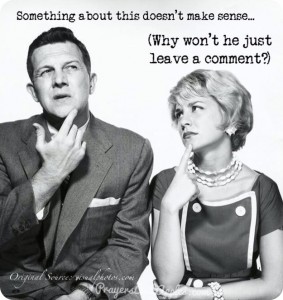
References
Corporate Disney. (2008). Walt Disney World Fun Facts. Retrieved: May 3, 2010.
Disney Archives. Walt Disney: A Biography. Retrieved: May 3, 2010.
Disney by the Numbers. (2007). Walt Disney World Resort. Retrieved: May 4, 2010.
Disney by the Numbers. (2010). Walt Disney Company. Retrieved: May 4, 2010.
Disney by the Numbers. (2010). Walt Disney, The Man. Retrieved: May 4, 2010.
Disney, W., Jackson, K. M. (Ed.). (2006). Walt Disney: Conversations (Conversations with comic artists). Jackson, MI: University Press of Mississippi.
Garvey Berger, J. (1999). Key concepts for understanding the work of Robert Kegan. In R. Kegan, (Ed.), Psychology E-1034 Adult Development. Cambridge, MA: Harvard course pack.
Just Disney. General Quotations. Retrieved: May 4, 2010.
Kegan, R. (1994). In over our heads: The mental demands of modern life. Cambridge, MA: Harvard University Press.
Kegan, R., Lahey, L. L. (2009). Immunity to change: How to overcome it and unlock potential in yourself and your organization. Cambridge, MA: Harvard Business School Publishing Corporation.

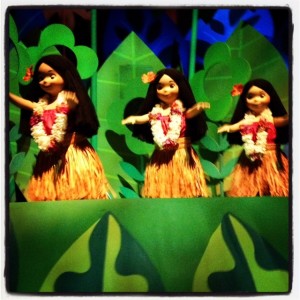

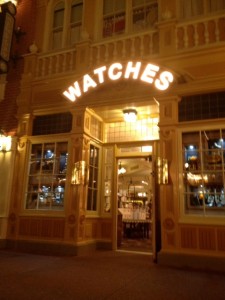
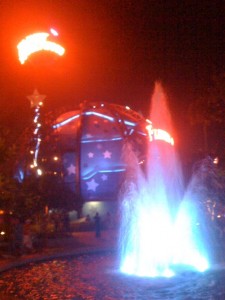

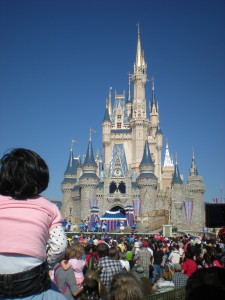

Absorbing Kegan’s orders was fascinating; especially as they looped through the life of a man who’s name is synonymous with happiness/success/safety.
This was an interesting read. Very intriguing and refreshing break down of Walt Disney. Thank you for the article!
So glad you enjoyed! Thanks for stopping by :)